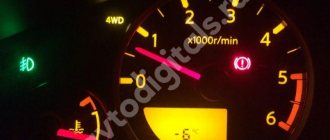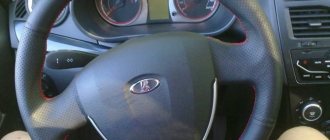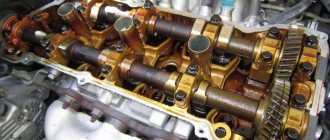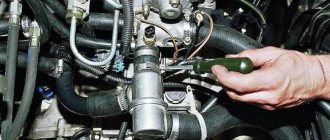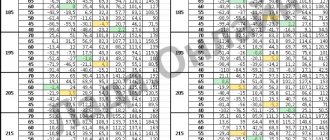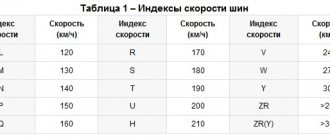In an environment of steadily rising fuel prices, fuel-efficient cars are becoming increasingly popular. Ratings of such cars are compiled depending on the type of engine, since it is impossible to compare gasoline and diesel models with each other in terms of fuel consumption. And if you add electric cars to them, the winner will be obvious! Therefore, it is advisable to compile the TOP of economical cars taking into account the fuel consumed.
TOP 15 most economical gasoline cars
Gasoline engines themselves are not characterized as economical, but in recent decades, models have appeared among them that fully meet modern trends.
Smart Fortwo
Compact cars consume less fuel than their more powerful counterparts.
Therefore, the Smart Fortwo for two passengers can easily be considered one of the most economical cars - with a 0.9 liter engine, it consumes only about 4 liters of gasoline per 100 km.
Since the car is designed for driving on city roads, it is very maneuverable.
Toyota IQ
It would be strange not to see a Japanese brand among the list of economical cars. Japanese automobile concerns are concerned about reducing fuel consumption and emissions into the atmosphere, so they regularly improve their technical equipment.
Toyota IQ is the most popular option among urban small cars.
After all, the liter engine is not only reliable, but also consumes gasoline extremely delicately - in the city, on average, 4.3 liters. On the highway, consumption drops to 3.9 liters.
Peugeot 208
The Peugeot 208 can also boast of low consumption. The designers envisaged the production of this car with engines of different sizes, but the most economical is the car with a one-liter engine.
Gasoline consumption in the city does not exceed 4.5 liters per 100 km, and on the highway the figures are close to 4 liters for the same mileage.
Opel Corsa
A practical and small hatchback is perfect for city trips and country trips. Despite its thriftiness, it is quite roomy and comfortable for the driver and passengers.
The Opel Corsa has a liter three-cylinder engine that consumes an average of 4.5 liters per 100 km. The manufacturer claims that gasoline consumption on the highway is reduced to 4 liters.
But still, when buying this car, you should focus on average indicators.
Skoda Rapid
This option can be classified as a budget car. It has a 1.2-liter engine, which has enough power to ensure maneuverability, dynamism and good handling. The pluses of the car include the spaciousness and comfort of the interior.
On average, the Skoda Rapid consumes 4.6 liters of gasoline per 100 km.
Citroen C3
Citroen C3 is a full-size model that will be of interest to both young people who value attractive design and experienced motorists for whom handling and dynamics are important.
A torquey 1.2-liter engine reduces gasoline consumption to 4.7 liters per 100 km. These indicators are relevant for movements in mixed mode. On the highway, consumption drops to 4 liters.
Ford Focus
This is one of the most popular cars among Russians. The hatchback combines two main qualities for car enthusiasts - thriftiness and spaciousness. The latter property allows you to use the Ford Focus for country trips to the country or a picnic.
In the city, gasoline consumption does not exceed 4.7 liters per 100 km; on the highway, the car “eats” even less. For a one-liter engine these are very good indicators.
Volkswagen Passat
The Volkswagen Passat is even ahead of its previous model in popularity.
Indeed, despite the engine capacity of 1.4 liters, the car consumes an average of 4.7 liters per hundred-kilometer distance.
Thrift is not the only advantage of the car. This list includes dynamism, power, a spacious trunk, reliability and good traction.
Kia Rio
Sedans and hatchbacks are produced under the Kia Rio brand. Both options are affordable, practical and economical.
But the model with the 1.2 liter engine has the best performance. On average, it consumes 4.8 liters of gasoline per 100 km of road.
Volkswagen Polo
Volkswagen Polo is in demand among car enthusiasts primarily due to its power. With a one-liter engine it reaches 95 horsepower. The car is a family car, so it combines practicality, dynamism and good handling.
In city driving mode, the car “eats” about 4.8 liters of gasoline, which gives it every right to be included in this rating.
Toyota Yaris
Japanese cars are in great demand in Russia due to their unpretentiousness and reliability. In addition, they are available to most car enthusiasts.
Toyota Yaris is the most economical Japanese car with a one and a half liter petrol engine.
With a power of 111 horsepower, it consumes no more than 5 liters of gasoline per 100 km.
Renault Logan
This roomy option is quite popular. Low gasoline consumption plays an important role in this. On the Renault Logan, the designers installed an engine with a volume of less than a liter and an output of 90 horsepower.
Taking into account the dynamism and reliability of the car, fuel consumption of 5 liters per 100 km looks more than fantastically low.
Honda Jazz
Honda Jazz is very popular in Russia. It is available in several modifications and with different engine sizes.
The 1.2 liter engine can be considered the most profitable for car enthusiasts. With it, the Honda Jazz consumes an average of 5.1 liters of gasoline per 100 km.
The advantages of the car also include power, affordability and reliability.
Citroen C1
The economical car is assembled mainly in the Czech Republic, which does not in any way affect the quality of the models of the French brand. Despite its modest dimensions, the Citroen C1 can comfortably accommodate four adult travelers.
It is equipped with a liter engine, characterized by performance and economy - 5.5 liters of gasoline per 100 km of distance traveled.
Nissan Qashqai
A democratic and stylish option is interesting to different categories of car enthusiasts.
Despite its full size, it stands out with its torquey 1.2 liter engine. The car consumes 6.2 liters of gasoline per 100 km.
These figures allow us to place the Nissan Qashqai in last place in the ranking of the most economical cars in terms of fuel consumption.
Kia Rio
Kia Rio 1.4 (107 hp) 4AT - from RUB 711,900.
Kia Rio 1.4 (107 hp) 4AT - from RUB 711,900.
Lada Vesta shares the penultimate line in the efficiency rating with our most popular “Koreans” Hyundai Solaris and Kia Rio. Average fuel consumption for all three is 6.6 liters
/100 km. It should also be noted that the Lada is combined with an auto-mechanical transmission (AMT) with a 106-horsepower engine. By the way, the Lada Kalina with a robotic gearbox demonstrates a similar figure, but in combination with a 4-speed hydromechanical automatic, the Tolyatti hatchback consumes noticeably more than 7.2 l/100 km.
It would seem that the 107-horsepower Solaris and Rio also have a classic 4-speed automatic, but the consumption of 6.6 liters is quite adequate for them. As for the new 6-speed automatic transmission, which is installed on the more powerful 123-horsepower modifications of Solaris and Rio, its average figure turned out to be 0.1 liters higher than that of the younger version.
10th place
TOP 15 most economical diesel cars
Diesel engines have become widespread precisely due to their efficiency. But their environmental friendliness raises serious doubts. This fact almost completely blocked their access to the European Union. But the Russian consumer is increasingly interested in them.
Opel Corsa
The list of the most economical diesel cars in terms of fuel consumption is rightfully headed by the Opel Corsa.
The small vehicle is distinguished by its sporty character, despite the 1.3 liter engine. The car consumes an average of 3.2 liters of diesel
. At the same time, it handles well, maneuvers well and boasts spaciousness.
Volkswagen Golf BlueMotion
Volkswagen Golf BlueMotion is one of the most fuel-efficient models in its segment. In addition, it was developed as an environmentally friendly transport with the lowest possible carbon dioxide emissions into the atmosphere.
The model is equipped with a 1.6 liter engine, keeping consumption at 3.2 liters of diesel.
In addition to this, the car is durable, productive and practical.
Hyundai i20 1.1 CRDi Blue
The Korean automaker has been actively working on producing fuel-efficient cars in recent years. And the Hyundai i20 1.1 CRDi Blue has become the pride of the brand - with a very small 1.1 liter engine, it stands out for its performance, comfort and reliability.
Consumption per 100 km does not exceed 3.2 liters of diesel. At the same time, the level of carbon dioxide emissions is considered one of the lowest among cars of the same group.
Citroen C4 Cactus
According to statistics, crossovers are very interesting among young people and those who often travel around the country. In both cases, it is important that the car is unpretentious and consumes as little fuel as possible. This is exactly what the Citroen C4 Cactus is.
The developers have provided a 1.6 liter engine for the car. With a power of 92 horsepower, consumption does not exceed 3.5 liters.
Peugeot 308
The luxury five-door hatchback is all about style, originality and efficiency. The model stands out for its technical characteristics, despite the very modest engine capacity of 1.6 liters.
The Peugeot 308 is more suitable for driving within the city and in this mode, diesel fuel consumption averages 3.5 liters per hundred kilometers.
Kia Rio
Gasoline cars are most often produced under this brand. But diesel Kia Rios can also be found on city streets without much difficulty. Such models are ordered separately with different engine sizes.
In this line, the most economical car in terms of fuel consumption is the Kia Rio with a 1.1 liter engine. This is quite enough to ensure good driving performance with a consumption of only 3.6 liters of diesel per 100 km. On the highway, consumption drops to 3.3 liters.
BMW 1 Series
Economical cars are not always budget options. And the BMW 1 Series is clear proof of this.
It is quite popular in the modification with a 1.5-liter engine. The car consumes 3.6 liters of diesel per 100 km, which becomes its main advantage over other premium models.
Additional advantages include comfort, spaciousness and dynamism.
Mercedes A-class
This model can be found in both petrol and diesel versions. In the latest modification, the Mercedes A-Class with a 1.5-liter engine is worthy of buyers' attention. It has a power of 107 horsepower, which is quite enough to maintain the sporty character of the model.
Despite its reliability and dynamism, the car consumes only 3.7 liters of diesel fuel per 100 km.
Renault Logan
The sedan of this brand attracts attention with its increased cross-country ability and reliability. It is equipped with a spacious trunk, which makes it indispensable on country roads and on long road trips.
In the diesel version, Renault Logan is equipped with a one and a half liter engine that consumes no more than 3.8 liters per hundred kilometers.
Renault Sandero
The hatchback is as popular as its “brother” Logan. Renault Sandero is reliability, adapted suspension and endurance. Therefore, vehicles are purchased for themselves by motorists of different ages and social status.
The car is equipped with a diesel model with a volume of 1.5 liters and a power of 90 horsepower. With its outstanding performance characteristics, the model consumes 3.8 liters of diesel per 100 km.
Seat Leon
One cannot but include the Seat Leon in the TOP of the most economical cars in terms of fuel consumption in the diesel group. This car is just gaining consumer love, but has everything it needs to top the lists of popular diesel engines.
The main advantages of the vehicle are increased endurance of the chassis, comfortable interior and excellent handling.
Seat Leon with an engine capacity of 1.6 liters consumes 4 liters per 100 km within the city.
Volvo V40 Cross Country
In Sweden, environmental protection is the concern of every citizen. Therefore, automakers produce economical vehicles that can reach high speeds with minimal fuel consumption. The Volvo V40 Cross Country meets all quality standards and copes well not only with highways, but also with off-road conditions and snowy roads.
The two-liter engine has a power of 120 horsepower. In the city, the model consumes 4 liters, and on the highway the figures drop to 3.6 liters of diesel.
Ford Focus
Every motorist can find a suitable Ford Focus for themselves, since the model is available in all types of bodies. This ensures increased demand for this vehicle in the domestic market.
But in addition, it is reliable, easy to maintain and affordable.
The most economical Ford Focus is with a one and a half liter engine. Its fuel consumption per 100 km is 4.1 liters of diesel.
Skoda Octavia
A large and roomy car can be economical!
And this was proven by the Skoda Octavia with a two-liter diesel engine, consuming no more than 4.1 liters on city roads.
With such characteristics, it is comfortable, holds the road well and is very unpretentious. In addition, it is reliable and can withstand heavy loads without additional maintenance.
Some tips to help save fuel
It is not enough to buy a car that consumes a small amount of gasoline or diesel.
It is important that the owner knows how to operate the equipment correctly, otherwise it will be impossible to achieve the technical characteristics specified by the manufacturer. However, this will not be difficult to do if you follow the recommendations of experts:
- It is necessary to brake and start smoothly. If you press the pedal sharply, this will lead to an increase in fuel consumption.
- Shift into a higher gear. This is especially true when driving on the highway. To save fuel, you need to accelerate as soon as possible and engage a higher gear.
- Owners of models with automatic transmission should avoid the “Kickdown” or “Sport” modes.
- It is important to monitor tire pressure. An insufficient value will lead to increased consumption.
- Regularly check the technical condition of the car. For example, a large gap between spark plugs causes excessive consumption of gasoline or diesel.
If you change your driving style and monitor the health of your vehicle, you can significantly reduce your fuel costs. Manufacturers take into account the wishes of thrifty car enthusiasts and offer various models, among which everyone will find a “swallow” to their liking.
Volkswagen Jetta 1.6
Another car that definitely deserves to be noticed. As for the cost, here, of course, not everything is as rosy as in previous versions, since the car costs about 1.7 million rubles. However, this is a completely different class. This is noticeable to the naked eye.
Read on topic: Top 15 best minibuses for families and travel – ranking for 2022
The appearance here is simply wonderful, the interior is very spacious, plus everything else there is a fairly reliable engine. Handling is at a very good level, even considering that I tested this car on a wet road. For this money you get a car that is simply ideal for urban conditions, however, it also performs quite well on the highway.
In the combined cycle, the car consumes about 6 liters per hundred kilometers, which, in my humble opinion, is a pretty good indicator. If you have the opportunity, then of course you will definitely like the car, it’s worth buying.
Chevrolet Spark 3
Surprisingly, very good cars have begun to be assembled in Kazakhstan. Spark 3 is a direct confirmation of this. It is worth saying that this is one of the best family cars that can be bought for less than 1 million rubles, and much less. The cost of a car is on average around 850 thousand. For this money you get a very high quality and quite spacious option, which has almost everything you need.
As for problem areas, as in any other car, of course there are some. First of all, many people complain about the poor quality of sound insulation. However, no one forces you to drive at a speed of more than 140 kilometers per hour, because only then a slight rumble is heard in the cabin. A car consumes an average of 6.4 liters of fuel per hundred kilometers.
Volkswagen Passat 1.4
Another legend reborn. This is definitely a car that deserves attention. First of all, pay attention to a very high-quality and reliable engine that will not let you down. Without any problems, such engines drive 500-600 thousand kilometers, and with all this, the repair will not last as long as a new car.
The salon is very spacious and this is immediately noticeable. As for the appearance, of course, everything is not so great here; the car looks, frankly speaking, quite rustic. However, we should not forget that this car has always had a fairly strict design and the updated version is no exception. The price is about 2.6 million rubles, which, of course, is a bit expensive. But in the combined cycle, the car spends about 5.1 liters.
Mazda 6 2.0
It’s worth saying that I’ve never liked Mazdas, but this option really deserves attention. Despite the fact that the volume is 2 liters, the car consumes only 6.5 liters in the combined cycle. The engine is of very high quality, the appearance is quite good, plus everything else, the price is only 2.3 million rubles.
What else I would like to note is the fairly high level of anti-corrosion coating. Until a certain point, Mazda was not at all a leader in this fact, but now cars practically do not rot, and the Mazda 6 is a direct confirmation of this.
Toyota Corolla E210
Oh, how I love the Corolla. I remember back in the 90s I had such a car and it really deserved respect. The updated Corolla looks just great. Moreover, there is simply an incredible amount of different features that definitely deserve your attention.
For example, everything is heated, from seats to mirrors. There is a very high-quality engine, which is generally the calling card of Toyota. As for the cost, here, of course, not everything is as wonderful as we would like; nevertheless, not every person can pay 1.8 million rubles for a car.
However, if you have this amount, then you will, without a doubt, buy a wonderful car. In the combined cycle, the car consumes 6.5 liters.
Ford Fiesta
Ford Fiesta 1.6 (105 hp) 6AT PowerShift - from RUB 768,000.
Ford Fiesta 1.6 (105 hp) 6AT PowerShift - from RUB 768,000.
Slightly lower fuel consumption - 5.9 l
for a hundred - demonstrates the 105-horsepower Fiesta. The difference of 200 kg in curb weight compared to the Focus did its job, bringing the car to ninth position.
8th place
Toyota Siena
This is, of course, not a Panamera, but it is also a quite worthy option, which is also a hybrid, and at the same time allows you to save money, because the car consumes only 6.7 liters. This is, of course, a very pleasant indicator, especially considering the fairly significant capacity of the car.
In addition, it is worth considering the fact that the car performs quite well even with AI 92 fuel. Moreover, as many owners of this car claim, it copes very well with moderate off-road conditions. Of course, this is not an SUV, but nevertheless, even this ground clearance is enough for the car to drive into the field.


